What Hi-Fi? Verdict
Q Acoustics bravely enters uncharted waters, but out-of-character sonic shortfalls let down an otherwise decent first effort
Pros
- +
Thoughtfully designed
- +
Vast hub connectivity
- +
Punchy, room-filling sound
Cons
- -
Lacks dynamic and rhythmic expression
- -
No dedicated control app
- -
Stands are expensive extras
Why you can trust What Hi-Fi?
It’s a simple fact of life that the more there is to do, the more there is to prioritise. For Q Acoustics’ first all-in-one streaming speaker system, the Q Active 200, the British speaker specialist could have focused most of its attention on the streaming side of things – that is the unchartered territory here, after all. While the brand has some degree of experience in powered speaker design, this is its first proper active streaming proposition.
But the Q Acoustics Q Active 200 appear to be a speaker-first design, given the ambitious acoustic engineering on show here. Get the speaker part right, as you’d hope a firm with such plaudits in the field would, and you’re halfway there.
Build
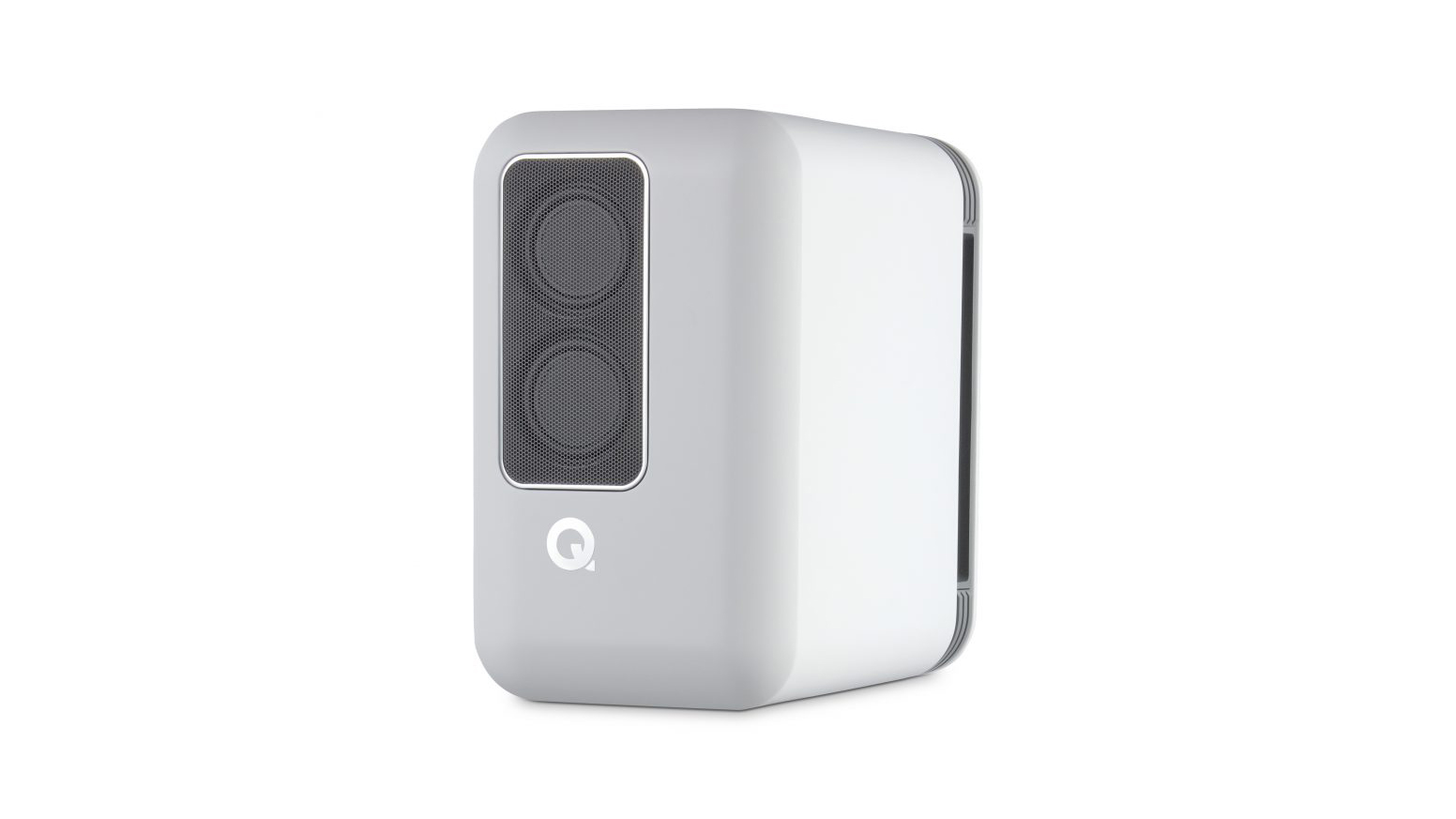
If you were expecting an active set of speakers resembling Q Acoustics’ current range of standmounters, then the Q Active 200’s design may raise a few eyebrows.
The boxes are narrow, deep and in a beautifully finished matte white – so far, so Q Acoustics. But instead of the usual tweeter and mid/bass woofer decorating each façade, there is a rectangular grille in the top corner that hides two round, 58mm BMR (balanced mode radiator) drive units.
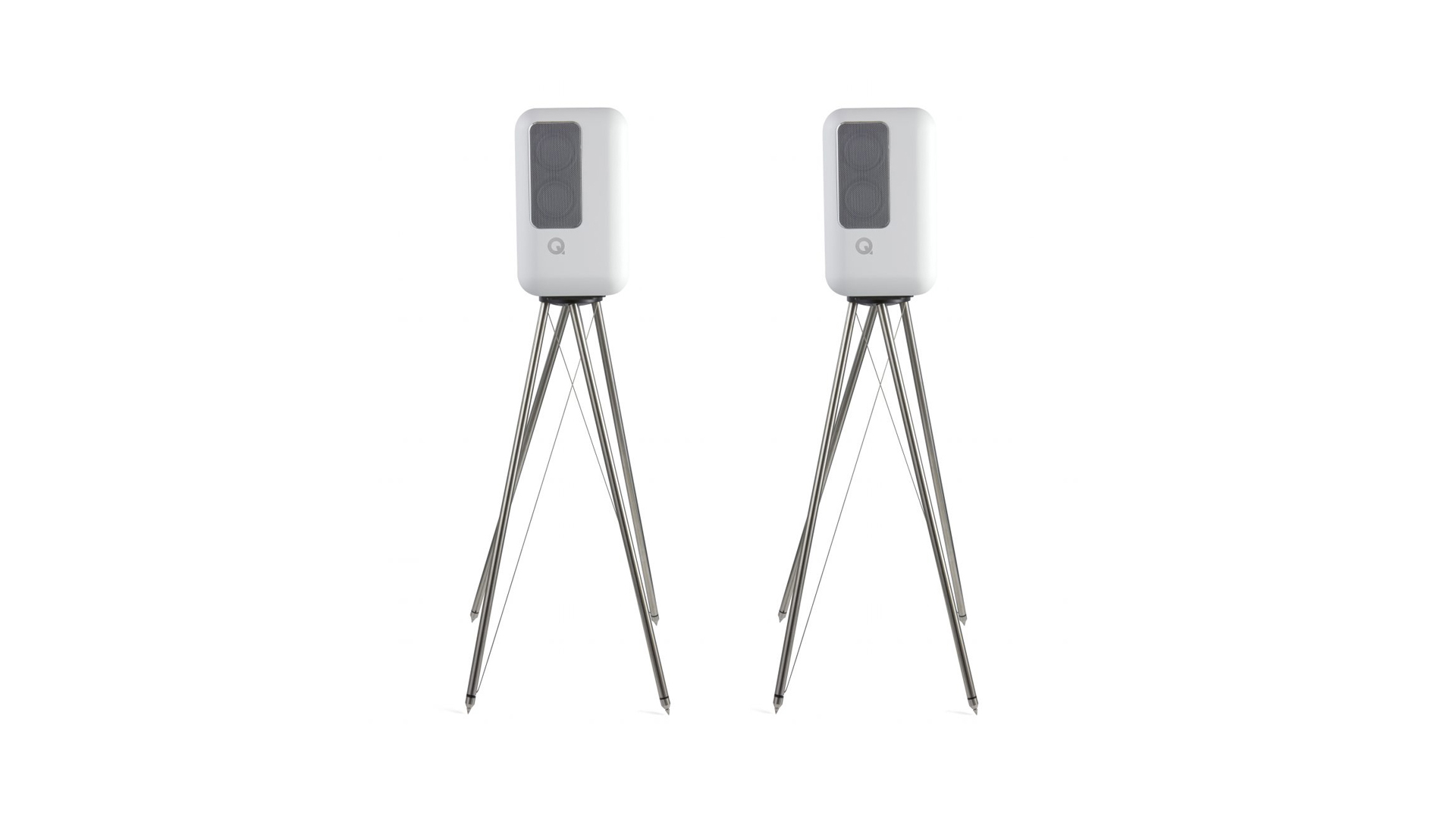
Transmission 24-bit/96kHz
Spotify Connect Yes
AirPlay 2 Yes
UPnP Yes
Bluetooth Yes
Inputs Line-level/phono, optical, HDMI
Drivers 114mm woofer, 2x 58mm BMR
Voice control Google Chromecast, Amazon Alexa
Power 100W per channel
It gives the classy cabinets a unique, neatly minimalist look that might sit well in contemporary designed living spaces – but the design is likely to divide opinion.
Q Acoustics has chosen to use a pair of BMR drivers in each cabinet in preference to conventional cone units. BMRs have two big advantages: they deliver both midrange and treble (and a bit of bass) from their modestly sized forms, so avoiding the need for a separate tweeter and mid/bass combination and the distortion generating crossover that goes along with it. And they also radiate sound uniformly across a 180-degree plane, reducing the usual tendency for speakers to create a listening ‘sweet spot’.
The drivers' diminutive size, extended frequency response and wide-dispersion talents make it a practical choice for a product such as the Q Active 200.
The latest hi-fi, home cinema and tech news, reviews, buying advice and deals, direct to your inbox.
Their positioning on the speaker – the dual BMR configuration can sit either on the inside top corner or outside top corner, depending on which way round the speakers are placed – brings some benefits too. According to Q Acoustics, the asymmetry in the acoustic path lengths from the BMRs to the baffle edges improves diffraction characteristics. It also offers flexibility in positioning: for far-field listening (further away or to the sides) they should be positioned to the inside, or for near-field listening, on the outside.
Of course, there’s only so much quantity and depth of bass a 58mm driver can dig up, which is why Q Acoustics has integrated a ported 11.4cm woofer into the rear of each cabinet. This brings driver cooperation and crossovers back into the mix, but Q Acoustics has carefully considered that.
The upper BMR (each BMR has its own DSP and amplification channel) operates the full frequency band from the crossover point with the woofer to 20kHz, whereas the lower BMR is designed to only work up to 5kHz. The woofer fires onto a rear baffle, its output guided through vents at the side of the cabinet, with sophisticated DSP keeping the sound from all the drive units time aligned.
Whereas the floorstanders in the Q Active range, the Q Active 400, use the P2P bracing as primarily engineered for the company’s Concept 300, these standmounts adopt a ‘dart bracing’ technique, which fixes the rear-firing woofer directly to the front of the cabinet to provide it with mechanical stability.
Q Acoustics has designed a pair of dedicated stands for the Q Active 200, the Q FS75, more modest evolutions of the innovative stands designed for the Concept 300. For an extra £350 ($499) per pair, they feature a skeletal, highly rigid ‘space’ frame made up of rods in compression, stabilised by cables in tension, and have fixings that enable them to be bolted to the standmounters.
Features
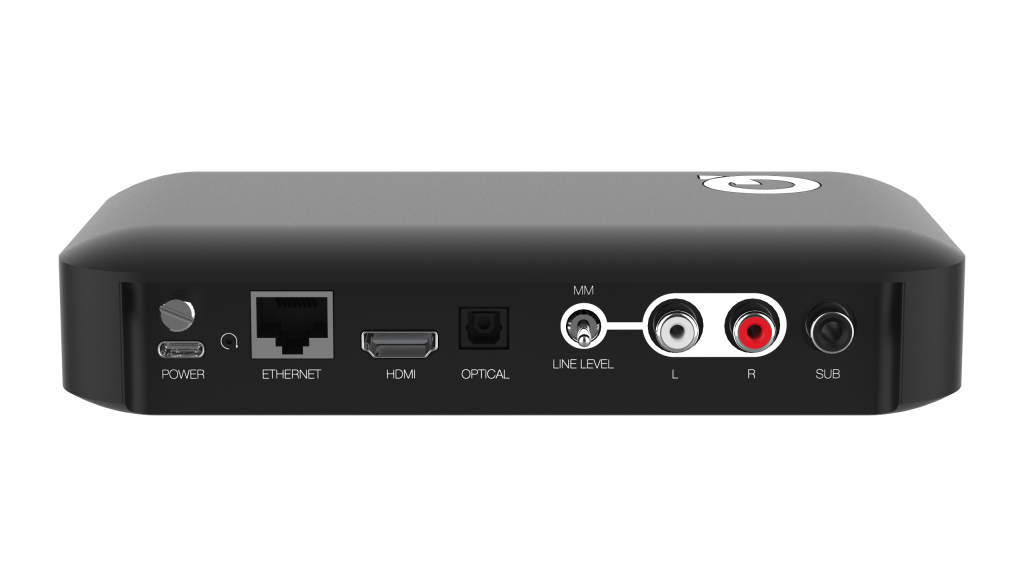
Q Acoustics has taken the decision not to house the streaming architecture and connectivity inside the speakers, but instead in a separate connectivity hub. There are two hub options to choose from, depending on where your voice control loyalties lie. The Google Home box (which we have on test) offers Google Assistant voice control, plus built-in Google Chromecast, while the Amazon Alexa box variant works with Alexa.
It’s a shame one box doesn’t cover both bases – there must be plenty of people who use Alexa, for example, but also stream music via Chromecast. And what if your allegiance changes down the line? Q Acoustics says it’s looking into making each hub individually available, though hasn’t yet confirmed its plans.
Whichever hub you choose, you get the same physical inputs – HDMI (ARC), optical, and an analogue input that is switchable between line level and moving magnet. Essentially, that means everything from a CD player to a TV to a turntable can be connected to the hub and streamed to the speakers. Digital signals from the HDMI and optical inputs are all converted to 24-bit/96kHz, as are analogue signals through the 24-bit analogue to digital converter (ADC).
Rather than the hub streaming these converted signals to a master speaker that passes the other audio channel to the slave speaker, it sends the two channels of audio directly to the speakers over a 5GHz wireless connection, helping ensure accurate syncing between them.
The hub is also a streaming gateway to AirPlay 2 for iOS users, Spotify Connect for Spotify Premium and Family subscribers, and Bluetooth. Support for the Roon music platform is on the way via a future firmware update, too.
If you own a NAS drive with music, UPnP support is onboard for playing networked music files up to 32-bit/192kHz (which subsequently gets down-sampled to 24-bit/96kHz for the transmission to the speakers). Q Acoustics will soon release its dedicated Q Active app for helping owners with registration and set-up, control hub customisation, software updates and basic controls, however it won’t be an all-encompassing music control app from which to browse networked or local music libraries and access streaming services.
That’s a shame, but third-party UPnP control apps aren’t hard to come by, and those using Tidal (via Chromecast) or Spotify (via Connect) may well choose to use the native apps anyway. For accessing our NAS device, we use the free MConnect and BubbleUPnP apps on an Apple iPad and Samsung Galaxy S20 phone during our testing and both work fine.
Alternatively, there's the compact RF remote control for adjusting volume, pause/play, skipping tracks and changing inputs. A strip of touch buttons across the rear of each speaker’s top panel more or less mirrors remote control, too. They’re nicely responsive – sometimes more so than the UPnP apps we use – although as there’s a short delay in the call and action, we would have liked visual confirmation of the communication from, say, a visible LED. There is an LED by the controls on the top panel that flashes to signify this, but unless you’re standing you won’t be able to see it.
Sound
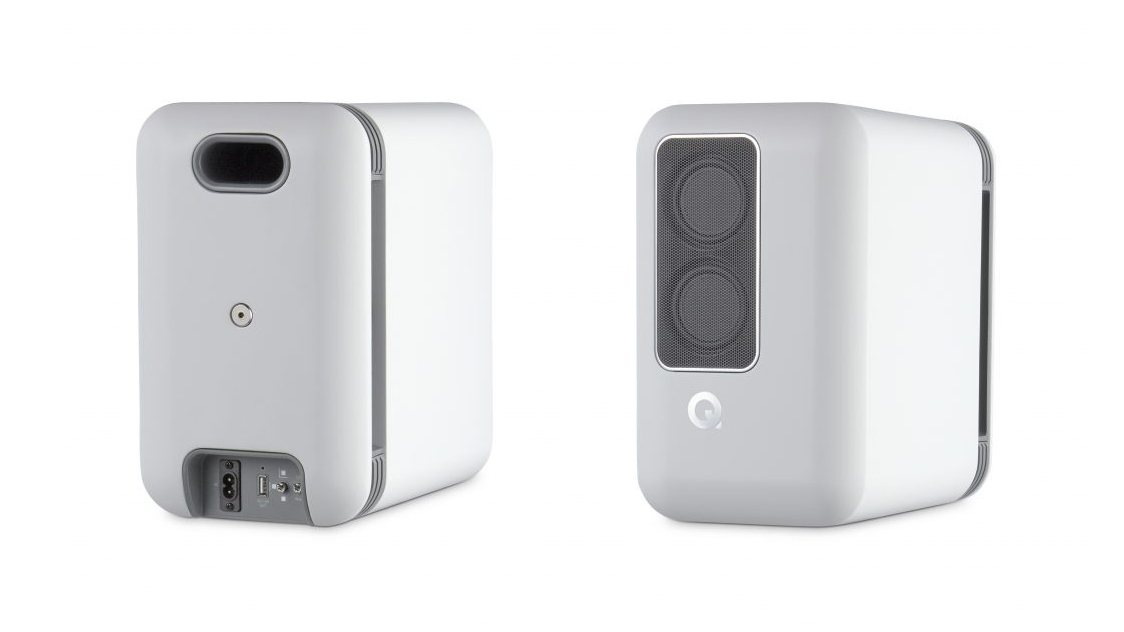
Q Acoustics has successfully built a reputation for excellent passive speakers in its 15-year history – especially in the budget market. Its products have consistently included class-leading clarity and entertaining punch, and those talents have predictably found their way into the Q Active 200 too.
We play Radical Face’s The Missing Road from Tidal via Chromecast, and the melodic acoustic strums, cello and vocal humming come through with an eager lucidity, the presentation startlingly clear and direct, not to mention room-filling. You shouldn’t necessarily expect Q Acoustics’ typical richness and warmth here, but the active speakers’ leaner, more forward tonal stance gives them a likeable sense of snappiness.
We stream over Bluetooth and, though we expect the usual drop in quality, the Q Active 200 keep things surprisingly tight, losing a bit of solidity and space compared with UPnP and Google Chromecast playback, but largely proving a worthwhile method of playback.
The BMR drivers keep their end up, spreading sound generously and evenly around our test room and ensuring the speakers produce an impressively big presence for their compact footprint. They have the volume and punch to make easy work of John Williams’s climactic compositions, and while that rear-firing woofer is limited in terms of absolute bass depth, it proves taut and terse as the bassline in SBTRKT's Wildfire (played over UPnP) comes into play. Bass blends in nicely with the rest of the frequencies, too, proving Q Acoustics has done a good job with the crossover between the BMRs and low-frequency driver.
To help optimise positioning, each Q Active 200 has three settings selected by a manual switch at its rear. There is ‘Positioned close to a corner’, ‘Positioned close to a wall’, and our preferred ‘Free-space’, which we find works best not only when the speakers were out in the room, but also near the back wall – possibly because the speakers’ bass output isn’t overbearing and the midrange is a little forward. As always, we’d recommend experimenting to see which setting works best in your listening room.
We switch from Q Acoustics' dedicated stands to a pair of Custom Design FS104 Signatures and the presentation sheds some clarity – from both a sonic and aesthetic point of view, we’d recommend the custom-built accessory. But, while the Q FS75 extracts more from the speakers, the overall differences aren’t huge. Just note that due to the rubber strips beneath the speaker, secure placement on a third-party pair of stands may be a little fiddly.
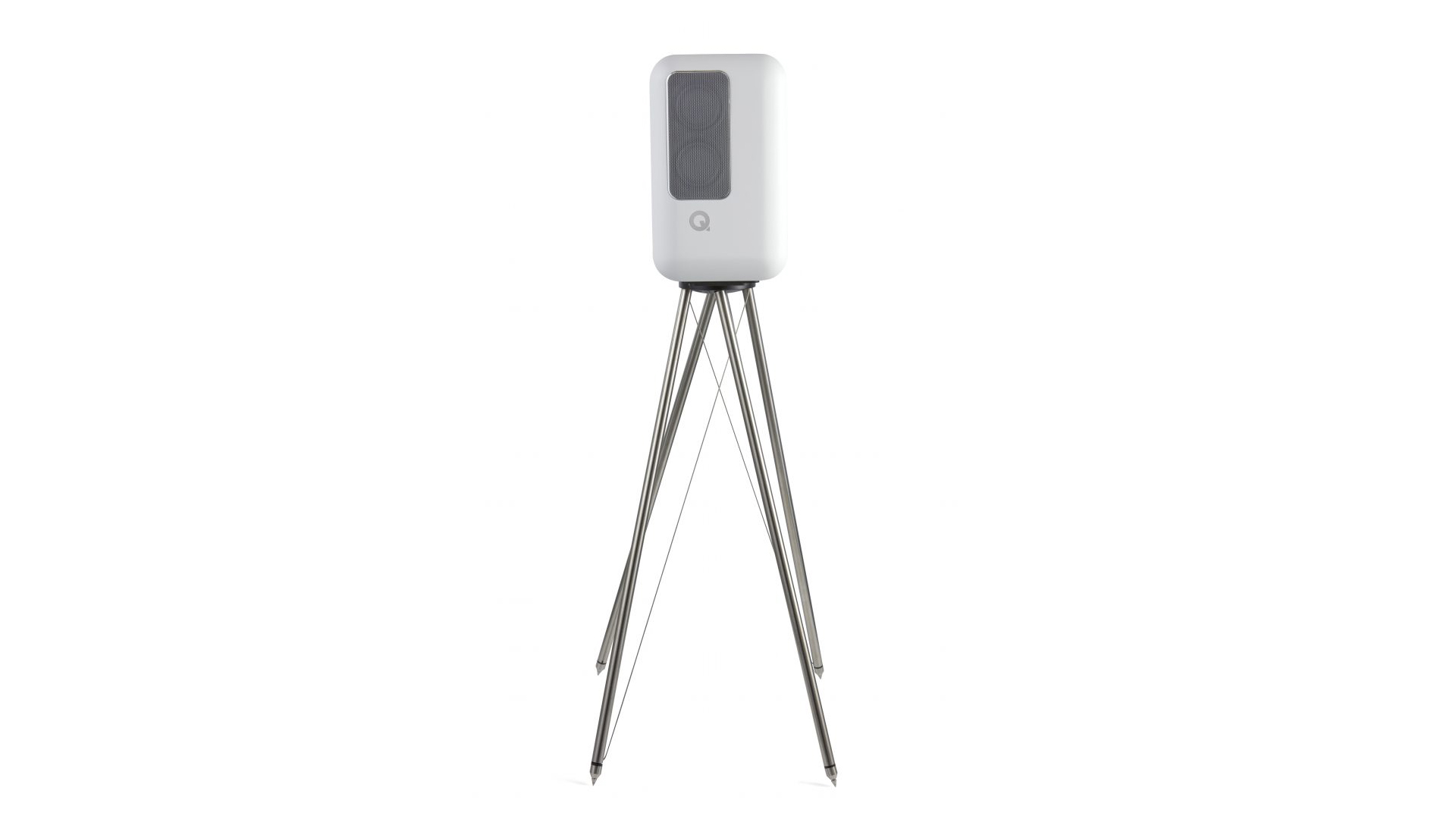
There’s a bit of harshness in the upper mids, which remains audible even after a week of use. It’s not the end of the world, but it does mean higher-pitched voices can start to grate after a while. It does nothing for a dense, cymbal-heavy track like Touché Amore's I’ll Be Your Host either.
But our biggest issue with the Q Active 200 is their combined lack of dynamic and rhythmic expression. With Nick Cave and The Bad Seeds’ Galleon Ship, the piano and vocal pairing comes through clear and solid, yet is bereft of real feel.
Everything seems to ride along one audio plane, lacking forward momentum and dynamic tiers. It doesn’t help that the sound staging isn’t particularly well layered either. Together, these things mean the track isn’t all that interesting or emotionally grabbing.
Whether trying to grasp the grooves that underpin Thundercat’s Them Changes, or nail the rhythmic logistics integral to the SBTRKT track, the Q Active 200 don't quite tie the musical strands together with the coordination necessary for them to thoroughly entertain. They conduct themselves in a startlingly clear and upfront manner, but beyond that they fail to captivate.
Offering an entire audio system inside such a compact and convenient concept is no easy task, but those such as the KEF LSX and KEF LS50 Wireless II, which sandwich the Q Acoustics in price, show it can be done. The Q Active 200 ultimately fall well below those standards, delivering a cruder listen than we’d expect at this not-insignificant price.
Verdict
It’s rare, if ever, that we publish sentences featuring both ‘Q Acoustics’ and ‘disappointing’, but here the Q Active 200 cannot hide behind their thoughtfully considered spec sheet and speaker engineering. It’s a shame because the brand has done a lot right – there’s vast connectivity on offer, a whole lot of speaker engineering, and dedicated stands for those who want them. But performance-wise, they simply aren’t entertaining enough to recommend.
It’s often the case that first efforts are followed by better second ones, and we very much hope that turns out to be the case here.
SCORES
- Sound 3
- Features 4
- Build 5
MORE:
Read our guide to the best all-in-one streaming systems
Read our KEF LSX review
Read our KEF LS50 Wireless II review
What Hi-Fi?, founded in 1976, is the world's leading independent guide to buying and owning hi-fi and home entertainment products. Our comprehensive tests help you buy the very best for your money, with our advice sections giving you step-by-step information on how to get even more from your music and movies. Everything is tested by our dedicated team of in-house reviewers in our custom-built test rooms in London, Reading and Bath. Our coveted five-star rating and Awards are recognised all over the world as the ultimate seal of approval, so you can buy with absolute confidence.

